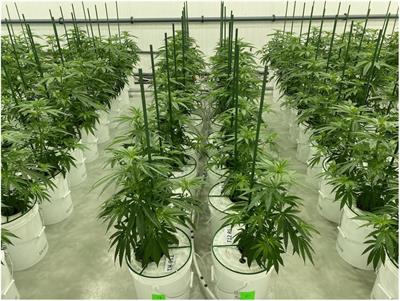Cpl. Cadaver
Member
A scientific study was published in November 2021 about the optimum amount of nutrients for Cannabis.
Increased K had no effect on inflorescence yield. 30 mg/L did not show deficiency nor did 340mg/L indicate toxicity. The study suggests that many commercial fertilizers supplied far too much K.
"The lack of response to K in the range of 60-340 mg/L observed in our trial may be partially due to competition for uptake from Ca"
P levels above 30mg/L ; the excess was sequestered in the root tissue. The paper indicated that 59 mg/L was optimum
The study openly states that N supplied at 194 mg/L was for optimum yield.
The study stated that there is an inverse relationship between yield and potency meaning that higher yield meant lower potency.
A must read.

 www.frontiersin.org
www.frontiersin.org
Increased K had no effect on inflorescence yield. 30 mg/L did not show deficiency nor did 340mg/L indicate toxicity. The study suggests that many commercial fertilizers supplied far too much K.
"The lack of response to K in the range of 60-340 mg/L observed in our trial may be partially due to competition for uptake from Ca"
P levels above 30mg/L ; the excess was sequestered in the root tissue. The paper indicated that 59 mg/L was optimum
The study openly states that N supplied at 194 mg/L was for optimum yield.
The study stated that there is an inverse relationship between yield and potency meaning that higher yield meant lower potency.
A must read.

Frontiers | Optimisation of Nitrogen, Phosphorus, and Potassium for Soilless Production of Cannabis sativa in the Flowering Stage Using Response Surface Analysis
Following legalisation, cannabis has quickly become an important horticultural crop in Canada and increasingly so in other parts of the world. However, due t...

